How to get rid of slugs in the garden with folk remedies?
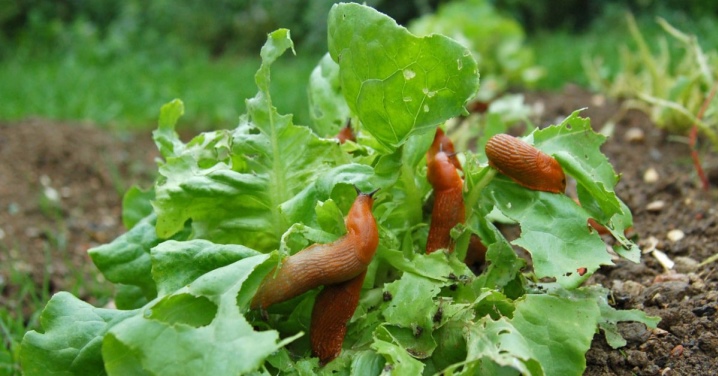
Slugs are gastropods, the appearance of which on the site is fraught with loss of yield. It is not surprising that gardeners, having discovered intruders, throw all their strength into fighting them. Read more about effective methods for getting rid of slugs in this article.
Is it possible to get rid of slugs forever?
Slugs appear in humid shady places, as well as where there is uncleaned rotting vegetation, old boards, and tall grass. In a word, the lack of regular and careful maintenance of the site is the main reason for the appearance of gastropods, similar to snails without a shell. Keep this in mind when answering the subheading question. In other words, if slugs appear on the site, then, of course, it is important to start fighting them.
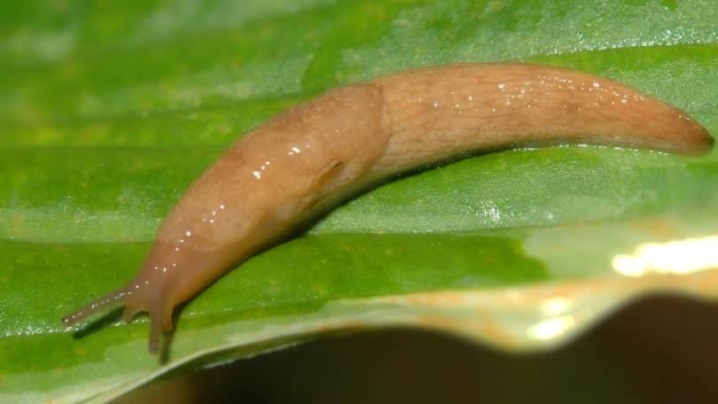
Folk remedies give a good effect. But it is equally important to identify the cause of the appearance of uninvited guests and eliminate it. Otherwise, this fight will continue indefinitely as the slugs lay their eggs. The situation is aggravated by the fact that slugs are hermaphrodites (that is, they have both male and female reproductive organs), and newly appeared mollusks are ready to reproduce new offspring in 2.5 months.
It is important to know that eggs in the ground can remain viable from autumn to next spring. That is why it is important to clean the area correctly and thoroughly at the end of the summer season.
In the same time, if, in parallel with the removal of existing pests, the cause of their appearance is eliminated, then slugs can be eliminated forever... Preventive measures are not the least important here.

Using traps
Traps are a way to kill adults. There are several options for traps, but it should be understood that this method will not be effective if you do not fight the larvae and eliminate the cause of the appearance of the gastropods. So, the easiest way to make bait is to take a small jar and pour cornmeal into it. The jar should be laid on its side, leaving in the place where you saw the accumulation of slugs. This is done at night, and in the morning, dead individuals will be found near the bait. Their digestion is unable to digest flour, which leads to death. It is clear that such baits can be placed throughout the site. Several cans are needed in the country.
Another option is to pour beer into small glasses and dig them into the ground so that they are almost level with the ground. It is more convenient to dig in first, and then fill the container with beer. Slugs will creep up on the smell, and then fall into the liquid, unable to get out. In the morning, you need to remove the dead individuals and top up the drink.
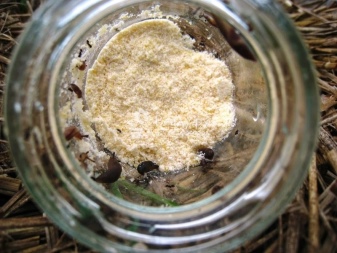
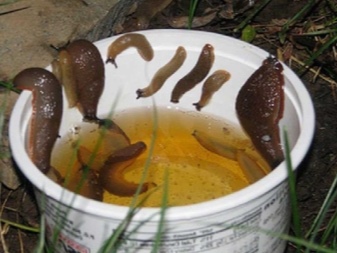
Instead of beer, you can use water, honey, and baker's yeast.
Combine the ingredients (for a liter of water you need a couple of tablespoons of honey, a pinch of yeast) and heat the mixture a little over a fire. It will become more viscous. Pour the "cocktail" into a glass, jar or bottle with a wide mouth, and then dig into the ground. The smell will attract slugs, they will fall into a trap, but they will no longer be able to get out of the sticky mass. Traps (with beer or honey composition) should be changed every 2-4 days. If necessary, add the bait.
Slugs are nocturnal insects. During the daytime, especially in the heat, they prefer to hide in humid, shady places. Knowing this, you can build a trap - another working method for killing slugs. You will need boards, slate and unnecessary rags. Liberally moisten the place of the future trap with water and throw a board or slate there. Cover it all with rags, pour water on top again. You can additionally grease the board or slate (with the side that will be turned to the ground) with kefir, beer, sweet water or juice.
Check the trap the next morning: pests will accumulate under it. They need to be collected and taken away from the site. Dry the ground under the trap (remove boards and rags), dig up and mulch with pine needles, lime or ash.
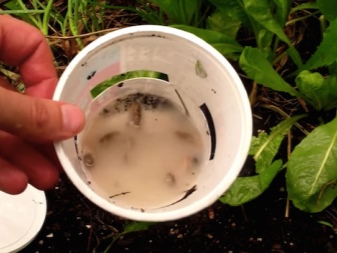
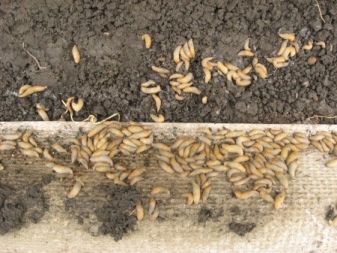
An ordinary plastic bottle can also become a simple trap. It needs to be slightly crushed from the sides, laid between the beds. For reliability, you can press down with a stone. Before that, juice, beer or honey water should be poured inside. Slugs will smell the smell and get into the bottle themselves, but they will not be able to get out back.
Baits can also be made from grapefruit, watermelon, and melon peels. These fruits and fruits are cut in half, the pulp is removed and small cuts are made along the surface. In the evening, they set the bait in the manner of a dome, under which slugs will gather. In the morning you need to lift the peel and collect all the slugs that are there.

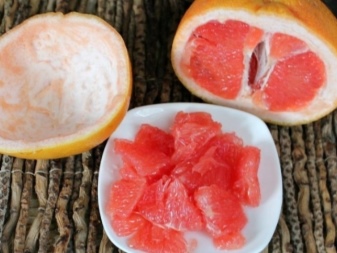
How can you restrict the movement of pests?
Together with the removal of slugs, it is worth thinking about limiting the movement of pests around the site, which will save the crop. Artificial soil and sand barriers in the garden will help with this. Build barriers by adding shells, crushed eggshells and needles, the smell of which scares away slugs, and sharp needles hurt the delicate body, preventing you from moving on. Such fences can be built around the beds, as well as around the entire site.
You can use not needles, but dry oak leaves, leaves of a tobacco plant. They should be ground into crumbs and the soil should be mulched. Finally, dry sawdust can be an alternative. Such protective mounds can be sprayed with ammonia, the smell of which is not tolerated by pests. An ammonia solution will help limit their movement and protect the plant. It is necessary to dilute ammonia (1 part) with water (5 parts), and then sprinkle the plants with this solution. This will not kill the slugs, but it will scare them away from the harvest.
Remember to repeat spraying periodically. Be sure to carry them out after watering or rain.
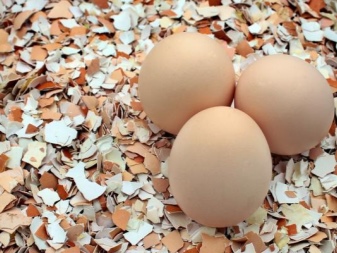
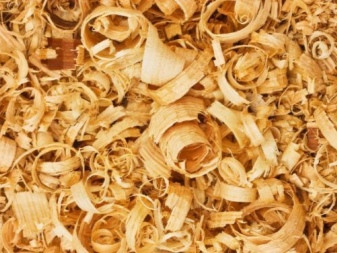
The name of the pests is determined by the way they move: they literally crawl on their belly, secreting mucus. This part of their body is very tender and sensitive. The following method of struggle is based on this: you need to crumble the eggshell or shells (or you can all together) and scatter the crumbs over the area. Salt is also suitable for these purposes. It is unsafe for a pest to crawl on such a surface, so this method will restrict him in movement.
Coffee grounds, coarse sand - all this also interferes with the movement of mollusks. Just make mounds of them around the plants or around the perimeter of the site. You can add to them the same needles, crushed eggshells, salt, slaked lime.
When using a "fence" it is better to create it not in one row, but in several. Trees and shrubs, tomatoes, cabbage, peppers can be protected in the same way. Slides must be created around each plant.
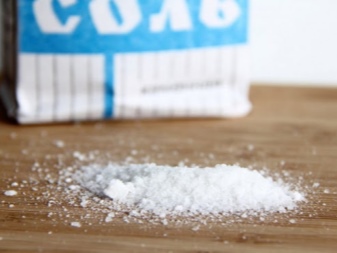
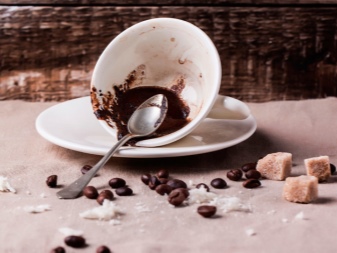
How to remove slugs with ammonia?
Ammonia (ammonia) is most likely the first remedy that experienced gardeners will advise in the fight against gastropod pests. If using ammonia, use 25%. For 10 liters of water, 1 liter of ammonia is needed. Mix everything thoroughly and pour into the cracks on the ground. This is where the slugs hide.
To cultivate the land, it is better to take 2 liters of ammonia and dilute it in 10 liters of water. Spray the ground with the resulting solution on the site.
When using ammonia and alcohol, care must be taken that the solutions do not get on the leaves of the plants, otherwise a severe burn cannot be avoided.

Other effective methods
Often, gardeners prefer one method. But it is much more effective to combine several at once. For example, to make baits at night, and in the morning to additionally collect pests by hand, making a "raid" along the paths of slugs.
Good results are obtained by using traps and spraying. Again, a morning walk around the beds can be added to these methods. Do not be lazy: if you see a slug, remove it immediately.
In addition to the beds, you should look under the porch, inspect watering cans, hoses, bucket bottoms. Very often slugs congregate there.

Salt and soap
An easy and inexpensive way to get rid of slugs is to use regular table salt. But it is important to understand that soil salinity may be undesirable for plants, so you should not sprinkle salt on the beds. But for a compost heap, this will be an affordable and effective tool, especially since it is such heaps that attract slugs and become their habitat.
After sunset, you just need to sprinkle the salt on the heap, slightly turning it over with a pitchfork or a shovel, so that the crystals penetrate into all layers of the heap. The salt dissolves when exposed to moisture, so it will be useful to read the weather forecast before the procedure.
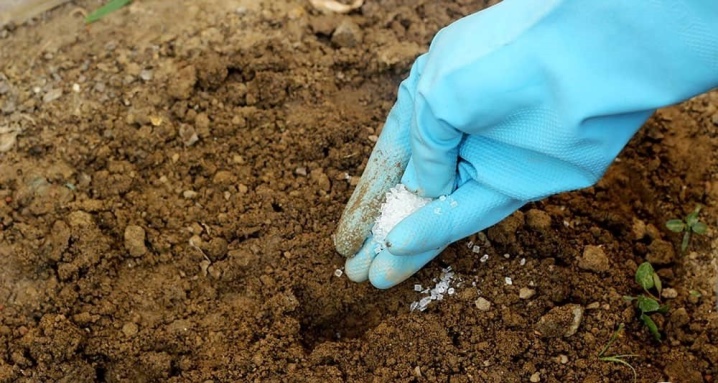
Soapy and salt water are harmful to pests. You can dig small holes around the perimeter of the beds and fill them with soapy water and salt water. To prevent the pits from crumbling and not attracting attention, they are covered with a cloth. The smell will scare off slugs, and those of them that crawl over wet tissue or fall into a hole will die.
It is good to combine soap with hot pepper. To do this, the pepper must be dried and ground into powder (you can immediately take the finished one). For 10 liters of cold water, 500 g of powder is required. The composition is stirred and left to infuse for 2 days. Then they mix again, warm up a little over the fire and insist again for a couple of days. The resulting composition (1/2 liter) is diluted with soap solution (100-150 ml), mixed and used for spraying. By the way, dry hot peppers can be added to mulch.

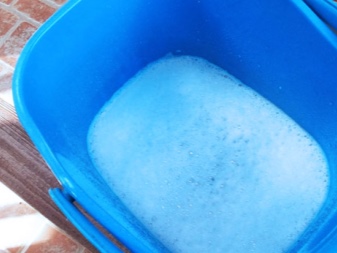
Lemon solution
Citric acid diluted in water also repels shellfish. For 10 liters of cold water, 30 g of acid is enough. The composition is mixed and sprayed over the site.
Important: this method can cause acidification of the soil, so use it with caution, no more than once a week.
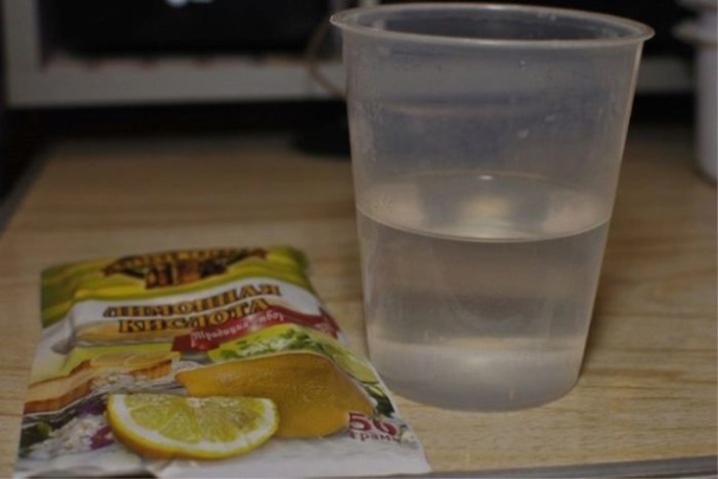
Wood ash
One effective way to ward off a clam pest from your site is to use wood ash. It sticks to their mucous membranes, which interferes with movement. In addition, ash is used as fertilizer, so there is a double benefit.
Ash should be used in the evening, when slugs crawl to the surface. It is enough to scatter it along the beds and row spacings, you can pollinate the plants themselves. It is important to use wood, natural ash. The presence of chemical residues in it is fraught with plant death. You can enhance the effect of ash by mixing it with slaked lime or tobacco dust. The optimal ratio is 1: 1.
The most effective solution is to scatter ash along the path of the slugs. It can be detected by whitish stripes that are visible on the ground and plants (this is dried mucus). It is recommended to sprinkle ash 1-2 times a week. After the slugs have disappeared from your area, a preventive procedure should be carried out after about a week.
Both ash and slaked lime lose their properties when wet, so the method is not used immediately after rain or watering.

Tobacco dust
Tobacco dust is similar in effect to wood ash. It can be used by adding to a layer of mulch, as well as in mounds-slug fences. But a solution based on tobacco dust will become more effective means of control. For 10 liters of water, 100 grams of dust is taken. After mixing the ingredients, they are boiled over low heat for 30 minutes. Then the solution must be cooled and used for watering or spraying.
The main active substance of the dust is nicotinoids. The effectiveness of tobacco dust depends on their activity. Alkaline will help activate nicotinoids. That is why grated laundry soap can be added to a solution of tobacco dust (100 grams per 10 liters of solution).
If tobacco dust is used in powder form, it is better to mix it in equal proportions with wood ash.

Soda
Soda is another simple and effective method for removing slugs. However, it is better to use calcined rather than food grade. It is enough to sprinkle the places of accumulation of pests and paths with powder to destroy the "invaders" in a matter of minutes. You can also use an aqueous solution: 100 grams of soda ash per bucket of water. This solution can be used to treat concrete paths, furniture and soil.
For spraying plants, a less concentrated composition is needed: 20 grams of powder per liter of water is enough. Spray the plants after sunset, otherwise they will get burned. And the main time of activity of slugs is night.
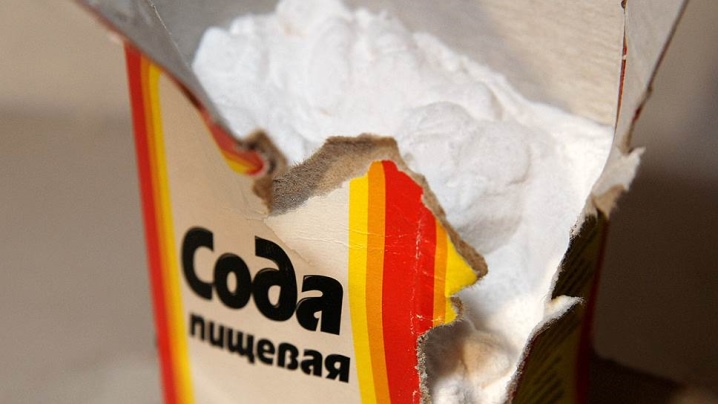
Vinegar
It is an effective weapon against slugs that requires careful handling. 9% table vinegar, which is diluted with water, is suitable. For a bucket of water - 70 ml of vinegar. After thoroughly mixing the solution, you can spray the plants with it.
It is important to ensure that the composition does not get to the roots. Do not often spray plants with vinegar. However, the same composition can be used to water accumulations of gastropod pests.

Mustard
If you are afraid of using harsh vinegar, then replace it with mustard. It is completely harmless to plants, but deadly to slugs. It is possible to use both dry powder and a solution based on it.
In the first case, you should simply scatter the powder around the plants, between the beds and in places where pests have been noticed. The solution is prepared as follows: 150 g of dry mustard must be poured with 10 liters of cold water. Insist for 2 hours, stirring occasionally. Plants are sprayed in the evening. The procedure is carried out at intervals of 3-4 days. It will take 2-4 sprays in total to get rid of the slugs.
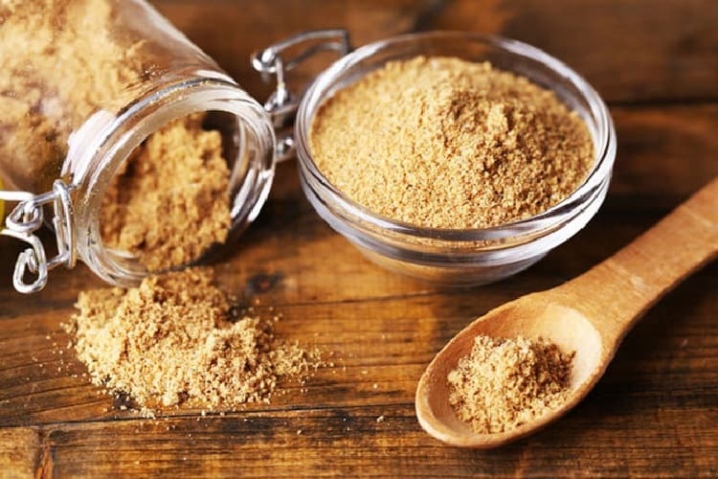
Useful Tips
As in many areas of life, in gardening, it is easier to prevent an invasion of pests than to deal with them. For this, preventive measures should be followed:
- remove last year's tops from the site, and place compost heaps as far as possible from the beds;
- do not leave garbage, boards, bricks on the site: wet areas are formed under them, ideal for the breeding of slugs;
- dig up a plot in autumn and spring (for the winter, mollusks are buried in the ground, so digging will deprive them of shelter, and they will die from frost), and in summer, do not neglect loosening the soil;
- use pine sawdust as a layer of mulch, and sprinkle the aisles with sawdust;
- to pick off the lower leaves of plants;
- remove weeds, prevent the appearance of tall grass near the site: slugs prefer to wait out the heat in the cool of the grass;
- prevent stagnation of water in the holes, waterlogging of the soil (if the site is waterlogged, take care of the drainage system);
- leave the recommended distance between plants when planting (as a rule, this is 30-50 cm);
- install a feeder on the site to attract birds, because birds are happy to eat slugs.
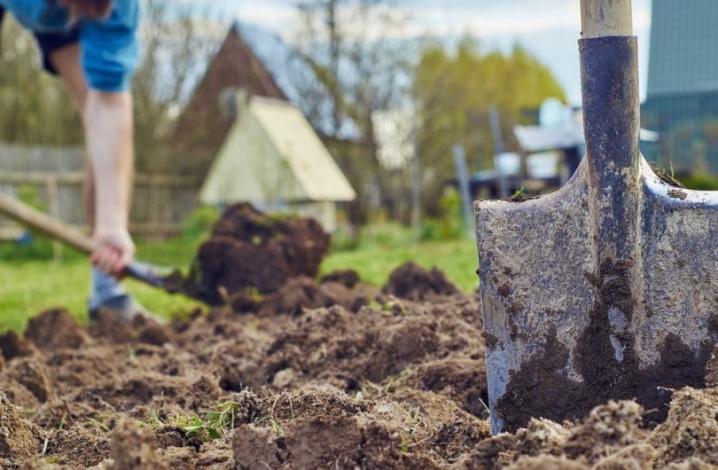
The favorite food of slugs is succulent cabbage leaves. And the vegetable itself is extremely difficult to tolerate spraying with the use of aggressive agents. The solution will be to use hot water. Cabbage can withstand watering at 60 degrees, while slugs die when "bathing" in water of 40 degrees. If molluscs are seen between the cabbage leaves, you need to spray the plant with water heated to 45-50 degrees. The heat exposure should not be prolonged: this will provoke a burn. After spraying, the slugs will die and need to be removed by hand.
They do not tolerate slugs and the smell of caffeine, while coffee does no harm to cabbage. In a glass of water, stir a double portion of regular instant coffee (no sugar) and spray it on the plant.Those molluscs that were in the leaves will die. In addition, a smell will remain around the garden bed, which will scare off new parasites.

It is important to follow the rules of agricultural technology, since one of the common reasons for the spread of slugs is the thickening of the planting. Observe the recommended distance between plants, cut off the lower leaves, tie up tall plants. Slugs do not tolerate strong, pungent odors such as mint, mustard, garlic, parsley, chicory, marigolds. This information should be used when planting the indicated plants around the perimeter of the site, as well as near the beds.
There are no problems with slugs in areas visited by birds, hedgehogs, frogs. It is enough to attract them: hang a couple of feeders on the site, organize a small pond.
Hedgehogs often wander into the garden themselves, it is enough to treat them with milk and cookies once.

For information on how to get rid of slugs in the garden with folk remedies, see the next video.










The comment was sent successfully.